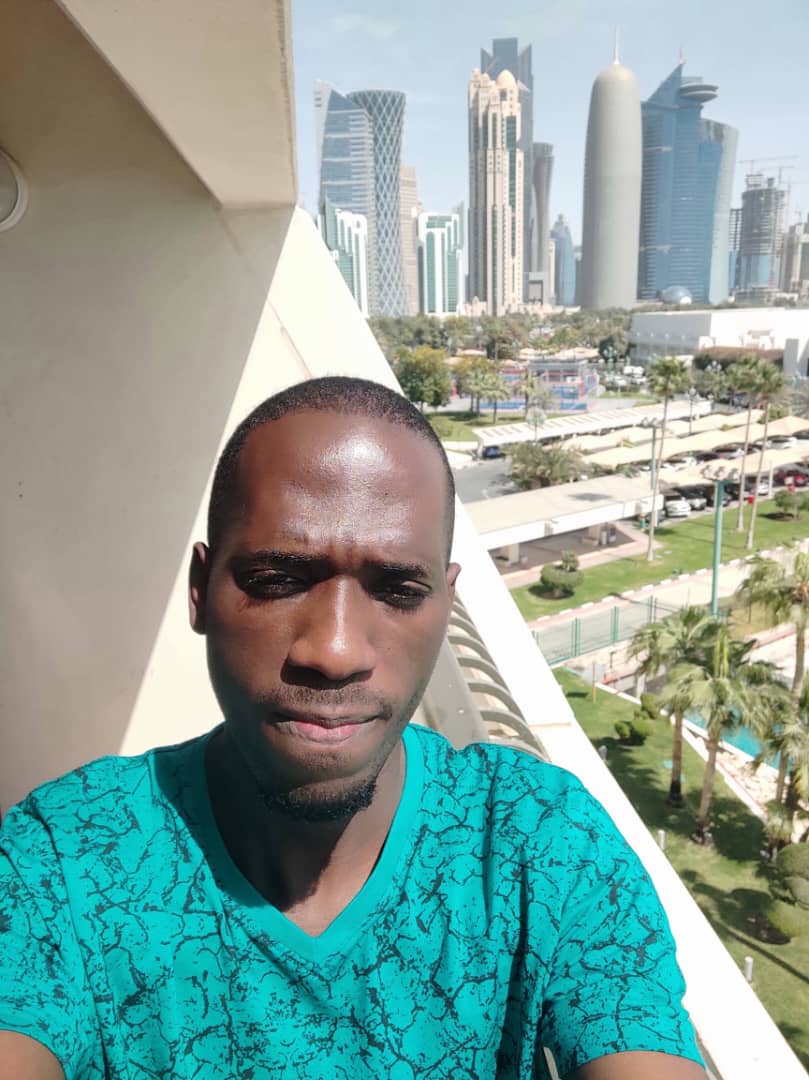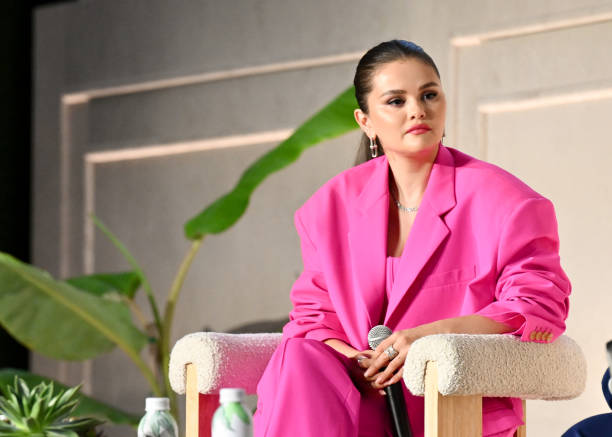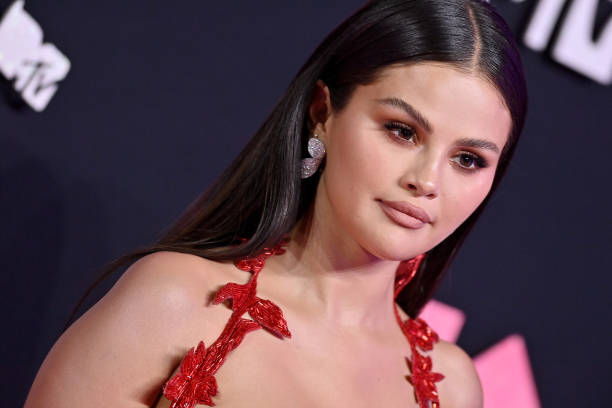Greetings are an integral part of Indian culture and traditions. The way one greets another person signifies the relationship between them and the respect accorded to the other person. Different types of greetings in India have deep cultural and traditional meanings attached to them.
How Greetings Play a Role in Indian Traditions.
In Indian culture, the most common form of greeting is the word “namaste”. Namaste literally translates to “I bow to you”. The gesture involves pressing one’s palms together in front of the chest and bowing slightly. Namaste is a respectful form of greeting and acknowledges the inner spirit or soul of the other person. It is used for people of all ages and social standings.
The Islamic greeting “adaab”, often spoken with the right hand placed over the heart, is used amongst Muslims in India. Adaab means politeness or respect and is indicative of the richness of composite culture in India.
Another common greeting is “Ram Ram” or “Sita Ram”. These phrases invoke the names of the popular Hindu deities Rama and Sita as a way to pay respect. Using the names of gods in greetings is part of the Hindu tradition of showing reverence to the divine.
In Tamil Nadu state, it is customary to greet elders by bending down and touching their feet. This greeting called “padippu” exemplifies the importance given to age and experience in Indian society.
Similarly, the expression “pranam” which means “I bow to you”, is used when greeting elders or superiors. The degree of bowing depends on the amount of respect being conferred.
These various greetings like namaste, adaab, ram ram, and pranam play an important cultural role in Indian traditions, signifying respect, status, and building relationships depending on the context.
What is the traditional Hindu greeting in India?
The most common and traditional Hindu greeting in India is “Namaste” or “Namaskar”. It is said with palms pressed together, fingers pointing upwards, and thumbs close to the chest while bowing slightly.
The word Namaste is derived from Sanskrit and is a combination of the words “Namas” meaning bow, obeisance, or adoration, and “Te” meaning to you. Together it means “I bow to you” and denotes respect.
This traditional greeting has been used for centuries by Hindus as a respectful way to greet people. It is a spiritual gesture that recognizes the inner light or soul within each individual.
Saying Namaste with the accompanying hand gestures is a way to convey warmth, respect, and humility between two people. It emphasizes the interconnectedness between individuals and expresses sentiments of friendship, empathy, and solidarity.
2. How do greetings reflect the cultural diversity of India?
India is an enormously diverse country with many religions, ethnicities, languages, and regional cultures. This rich cultural diversity is reflected in the wide variety of greetings used across different parts of India.
In the culturally diverse North India, the most common greeting is “Namaste”, with the ubiquitous phrase “Namaste ji” showing added respect. In Tamil Nadu, “Vanakkam” is the traditional Tamil greeting. In Kerala, “Namaskaram” is said while bowing slightly.
The Parsis greet each other with “Saalamo Alaikum”, derived from their Persian roots. Indian Muslims often use the Arabic greeting “Assalamu Alaikum”. Christians use “Praise be to Jesus Christ” in Malayalam or “Hallelujah” in other parts of India.
Sikhs use “Sat sri akal” to greet each other. In Punjab, “Ji aayan nu” is a warm greeting. In Gujarat, “Kaise ho” is common among friends. In Karnataka, “Namaskara” is used with elders.
These diverse greetings with origins in Sanskrit, Persian, Arabic, and various Indian vernaculars demonstrate India’s cultural pluralism and the importance of greetings in Indian social life. Understanding the greetings of each region fosters goodwill between citizens across the country.
3. What are some other greetings used in India besides “Namaste”?
In addition to “Namaste”, here are some other common greetings used in India:
- Adaab – a traditional Urdu greeting said with a slight bow and the hand placed over the heart.
- Namaskar/Namaskaram – a respectful Hindi and Malayalam greeting with palms pressed together.
- Vanakkam – the Tamil greeting said with palms together at chest level.
- Nomoshkar – the Bengali word for namaste meaning “I bow to you”.
- Khammaghani/Khamma – a greeting used in Assam and Bengal meaning “welfare to you”.
- Bonjour – a greeting used in parts of India influenced by French culture.
- Sat Sri Akal – the formal Sikh greeting meaning “God is truth”.
- Salaam/Salaam Alaikum – an Urdu/Arabic greeting used by Indian Muslims.
- Jai Shri Krishna – a greeting used across India meaning “hail Lord Krishna”.
- Ram Ram/Jai Siya Ram – a Hindi greeting referring to Lords Ram and Sita.
- Dhanyavaad – the Hindi word for “thank you” used as an informal greeting.
- Pranam – a respectful Hindi greeting with a slight bow.
4. How do greetings play a role in building relationships in India?
Greetings play an important role in building relationships in India due to the cultural emphasis on demonstrative warmth, hospitality, and interpersonal connections.
Using respectful, polite greetings is seen as a way of honoring elders, expressing deference to authority, and showing sensitivity to social expectations. This helps build rapport and trust with strangers and acquaintances.
The use of spiritual and religious phrases like “Namaste” and “Jai Shri Krishna” helps create a sense of community and bonding. Asking after someone’s family and wellbeing further cements ties.
Greetings are multigenerational – grandparents teach children traditional words which they carry forward. The use of regional greetings connects people to their linguistic and geographic roots.
Knowing the appropriate greetings for social and professional relationships demonstrates cultural fluency and emotional intelligence. Relationships deepen when effort is made to understand and adopt local greetings.
Therefore, taking the time to properly greet someone and asking about their life builds meaningful connections and strong relationships in Indian society. The bonds Indians share are nurtured through reciprocal greetings.
5. What is the importance of understanding greeting etiquette in India?
Understanding proper greeting etiquette is very important in India due to the cultural emphasis on demonstrating respect, humility, and social grace in all interactions. Using appropriate greetings is essential for making a good first impression.
Knowing when to say Namaste with hand gestures, bow slightly, or simply smile sets the tone for a respectful interaction. Understanding when to use formal titles like “Sir”, “Madam”, or “Ji” with someone’s name conveys deference.
Not using suitable greetings for elders, authority figures, and acquaintances may be seen as rude or uncultured. Conversely, using very formal greetings in casual settings might seem strange.
Knowing if a light handshake, hug, or cheek kiss is appropriate for the social context prevents causing offense. Familiarity with religious greetings like “Jai Shri Krishna” and “As-salamu alaykum” also shows cultural sensitivity.
In professional settings, the proper greetings and introduction etiquette leave positive impressions and enable smoother business relationships. With strong greeting norms and protocols, comprehension of etiquette is key to cultural respect.
6. How do greetings reflect the respect and warmth exchanged in Indian culture?
Greetings in India beautifully encapsulate the importance of showing respect and exchanging warmth, which are hallmarks of Indian culture.
Saying “Namaste” with folded hands acknowledges the divine soul in each person. Adding “Ji” to names signifies respect for elders and authority. Touching the feet of grandparents to seek their blessings demonstrates veneration.
A hug and kiss on the cheek between friends reflects affection. Inquiring about family and wellbeing conveys care and emotional intimacy even between acquaintances.
Use of terms like “bhai” (brother) and “didi” (sister) creates bonds of fictive kinship. Calling older males “chacha” (uncle) and females “kaki” (aunty) shows regard for their wisdom.
The plethora of spiritual and regional greetings like “Ram Ram”, “Vanakkam”, “Sat Sri Akal” build a sense of cultural oneness. The ubiquitous “adaab” symbolizes grace and etiquette.
Therefore, greetings in India truly encapsulate the warmth, gentility, and respect that undergirds social relations within families, friend circles, neighborhoods, and diverse communities across the country.
7. What are some non-verbal gestures used in greetings in India?
In addition to spoken greetings, non-verbal communication through gestures, facial expressions, and body language play an important role in Indian greetings. Some key non-verbal aspects include:
- Namaste – Folded palms placed near the chest with a slight bow.
- Handshake – Common in urban professional settings, often with soft grip.
- Hugging – Close friends and family may briefly hug when meeting.
- Bowing – Bending forward slightly to show respect to elders.
- Cheek kiss – Urban upper class may give air kiss on cheek as a casual greeting.
- Touching feet – Touching feet of elders to seek blessings by bending down.
- Hand over heart – Placing right hand on heart as a formal greeting.
- Eye contact and smile – Maintaining eye contact and smiling adds warmth.
- Head wobble – Subtle side-to-side head motion to indicate yes.
- Raised eyebrows – Quick raise of eyebrows to say “hello” in casual settings.
- Hand wave – Usually more common in urban settings for distant acquaintances.
- Salute – Used for formal uniformed greetings.
These non-verbal dimensions enrich the meaning and messaging behind greetings in Indian culture. They reflect values like respect, deference, and humility.
8. How do greetings differ between regions and religions in India?
India boasts astounding diversity with many languages, ethnicities, and faiths – and this pluralism is reflected in greetings as well.
“Namaste” and “Namaskar” in folded-palm style are near-universal among Hindus. Muslims favor “As-salamu alaykum” or “Adaab”. Sikhs say “Sat sri akaal”. Christians use “Praise Christ” or “Praise the Lord”.
Regionally, “Nomoshkar” is used in Bengal while Tamil Nadu prefers “Vanakkam”. “Khammaghani” is heard in Assam and “Ji Ayan Nu” in Punjab. “Pranam” is common in eastern and northern states.
Dravidian cultures like Karnataka and Kerala use greetings like “Shubhodhaya” and “Namaskaram” derived from Sanskrit. Northern states add respectful suffix “Ji” frequently.
In formal contexts, verses like “Ram Ram” and “Jai Shri Krishna” are pan-Indian. Informally, “Kyon” and “Kya haal hai” are heard nationwide.
Therefore Indian greetings beautifully demonstrate the “unity in diversity” ethos. Local customs co-exist with national unifiers in greetings, reflecting shared civilizational heritage along with regional, linguistic, and religious diversity.
9. What are some common greetings used in business settings in India?
Greetings in professional business settings in India reflect courtesy and formalism. Common greetings and words used include:
- Namaste – Said with palms joined and slight bow, a respectful formal greeting.
- Good morning/afternoon – Spoken with a smile and eye contact.
- Sir/Madam – Used with surname to politely greet senior officials and clients.
- Ji – Added after names and titles to show respect.
- “Pleased to meet you” – Said when meeting someone for the first time.
- Handshake – A firm handshake maintains formality.
- “How may I help you?” – Shows willingness to assist.
- “At your service” – Demonstrates enthusiasm to serve.
- “Kindly take a seat” – Polite way of welcoming visitors.
- “Would you like some tea or coffee?” – Hospitality offering.
These greetings establish a formal, polite, and hospitable tone for professional relationships and create a friendly yet service-oriented impression. Proper etiquette greases the wheels of commerce and trade.
10. How do greetings reflect the changing social dynamics of India?
While traditional greetings like “Namaste” and “Adaab” remain common, India’s rapid socio-economic changes are also reshaping greetings in subtle ways.
The rise of a modern, well-traveled middle class has popularized casual “Hi”, “Hello”, and “Hey” in urban centers, reflecting globalization. Hugs and air kisses have emerged in upper-class circles.
In cosmopolitan workplaces, gender-neutral greetings are gaining ground over “Sir” and “Madam”. Younger generations use equal-status casual greetings with elders rather than subordinate terms.
Greetings highlighting economic mobility like “Kya haal hai?, Good to see you!” are rising. The traditional “Aap” and “Ji” as markers of respect face competition from casual “Tu” in some settings.
However, traditional greetings have also undergone revival along with other aspects of Indian heritage. Even modern urban Indians often fold hands to say traditional “Namaste” and “Namaskar”.
Therefore, Indian greetings demonstrate a blended culture grappling with modernity and tradition through social evolution. The essence of respect and warmth is adapting to changing contexts.
11. What are some common mistakes to avoid when greeting someone in India?
While Indian greetings center around respect and humility, some common mistakes to avoid include:
- Using casual “hi” or “hello” with elders, teachers, bosses – better to use “Pranam”, “Namaste”, “Good Morning Sir/Madam”.
- Assuming handshakes are universally accepted, especially across gender. Best to wait for women to initiate.
- Opening with first names instead of surnames denotes overfamiliarity. Always use surnames unless invited to do otherwise.
- Forgetting to add “Ji” after names and as a response during conversations shows informality.
- Neglecting to make eye contact, listen actively, and inquire about wellbeing appears disinterested.
- Getting too physically close or initiating touching like hugs or shoulder pats invades personal space.
- Assuming Westernized “air kisses” are universally accepted across genders.
- Projecting loudness, excitability, impatience, or aggression deviates from expected grace.
- Failing to smile sincerely takes away the warmth that should suffuse greetings.
With thoughtfulness and some research on regional customs, most common greeting blunders can be averted, paving way for respectful cultural exchange.
12. How do greetings reflect the importance of respect in Indian culture?
The deep significance given to demonstrating respect is abundantly clear in Indian greetings.
Using formal titles like “Sir”, “Madam”, “Uncle”, “Aunty” shows regard for elders and authority figures. Adding suffix “Ji” also signals respect.
Saying “Pranam”, “Nomoshkar”, “Adaab” with hands pressed together and slight bowing reflects humility and grace. Touching feet of elders seeks their wisdom and blessings.
Asking “how do you do?” in English or “aap kaise hain?” in Hindi symbolizes care for others before self. Inquiring after family indicates concern.
Using terms like “bhai” (brother), “didi” (sister), “bhabhi” (sister-in-law) builds bonds. Calling older males “chacha” (uncle) and older females “kaki” (aunty) conveys familial respect.
Avoiding first names signifies distance and deference to older individuals and authority figures.
Therefore, the reverence for age, experience, and station in life is evident in the language, gestures, and etiquette of Indian greetings. Mutual respect undergirds social relations and interactions.
13. What are some traditional greetings used during festivals in India?
India’s many festivals and religious celebrations have associated traditional greetings:
- Diwali – “Shubh Deepawali” (Happy Diwali), “Saal Mubarak” (Happy New Year).
- Holi – “Shubh Holi”, “Rang Barse” (may color fill your life).
- Eid – “Eid Mubarak”, “Khushamdeed” (Happy Eid).
- Onam – “Onashamsakal” (Happy Onam).
- Bihu – “Shubho Bohag Bihu” (Happy Bihu).
- Gurupurabs – “Wahe Guruji ka Khalsa, Wahe Guruji ki Fateh” (Hail the Sikh community).
- Durga Puja – “Shubho Sharodiya” (Happy Autumn).
- Krishna Janmashtami – “Jai Shree Krishna” (Hail Lord Krishna).
- Maha Shivratri – “Har Har Mahadev” (Hail Lord Shiva).
- Christmas – “Merry Christmas”.
- Raksha Bandhan – “Raksha Bandhan Ki Shubhkamnayein” (Happy Rakhi).
These celebratory greetings bond communities, build camaraderie, and spread cheer during India’s diverse festivals, strengthening social ties.
14. How do greetings reflect the spiritual beliefs of people in India?
Indian greetings frequently integrate expressions reflecting the deep spiritual beliefs of the Indian people across faiths.
Hindus commonly use “Namaste,” literally “bowing to the divine in you”. The ubiquitous “Ram Ram” invokes Lord Rama. Saying “Jai Shri Krishna” praises Lord Krishna.
Sikhs greet each other with “Sat sri akal,” emphasizing the eternal nature of Truth and God. Their parting greeting “Waheguru ji ka Khalsa” references the Almighty.
Muslims use the Islamic phrase “As-salamu alaykum,” wishing peace upon others. The expression “Khuda Hafiz” invokes God as the Guardian.
Christians employ greetings like “God bless you” and “Praise the Lord.” Calling others co-believers like “Brother” and “Sister” affirms faith bonds.
Therefore, greetings in India frequently reference, praise, and show reverence toward the divine, reflecting the shared spiritual worldview of the Indian people. This is seen as bringing blessings into even casual day-to-day interactions.
15. What are some common greetings used in formal settings in India?
Greetings in official, professional, and ceremonial contexts in India emphasize courtesy, hierarchy, and gravitas. Some common formal greetings include:
- Good morning/afternoon + Sir/Madam + Last name – Shows respect.
- Namaste with hands pressed together – Traditional respectful greeting.
- “Pleased to meet you” – Polite when meeting someone.
- “How may I assist you?” – Conveys service mentality.
- Handshake with firm grip – Professional Western greeting.
- “Thank you for coming” – Appreciating guests/visitors.
- “Welcome Sir/Madam” – Making dignitaries feel welcomed.
- “It is an honor…” – Showing esteem and deference.
- “We are grateful for your presence” – Honoring attendance of VIPs.
How do greetings reflect the cultural identity of different regions in India?
Greetings in India are deeply tied to regional cultures and identities. The most common greeting ‘Namaste’, said with palms pressed together, is used across India. However, different regions have their own distinct greetings stemming from local languages and customs.
In Punjab, ‘Sat sri akal’ is used, reflecting the importance of Sikhism. In Tamil Nadu, ‘Vanakkam’ is common, using the local Tamil word for greetings. In West Bengal, people say ‘Nomoshkar’ derived from Bengali. In Karnataka, ‘Shubhodaya’ meaning ‘good morning’ in Kannada is used.
Maharashtrians use ‘Namaskar’ from Marathi. These diverse greetings reflect India’s regional diversity, linking greetings to local culture and language.
They showcase India’s composite cultural fabric by preserving distinct sub-regional identities within a broader Indian civilizational ethos. The use of these phrases sustains cultural uniqueness amidst larger Indian integration.
What are some traditional greetings used during weddings in India?
Indian weddings involve many traditional greetings reflecting their cultural significance. When the groom arrives at the bride’s place, he is greeted with ‘Baraat Swagatam’ meaning ‘welcome groom’s procession’.
The bride’s mother greets the groom with ‘vara priyudu’ in Telugu or ‘Mana gharana ki naa magavaadu’ meaning ‘become the son-in-law of our house’. During ‘vara puja’, the bride’s family greets the groom with ‘Devaraju varamu’ meaning ‘the bridegroom has come’ in Telugu.
When the bride and groom meet at the wedding mandap, they greet each other as ‘Hari Om’ symbolizing unity. The bride tells the groom ‘soukyamu ledani anchana’ meaning ‘be with me forever’ in Telugu.
During the sindoor ritual, the groom chants ‘Sindooram Tejayathaam’ depicting the bride’s marital status. Throughout the wedding, the phrase ‘Ladkiwale-ladkewale bhai bhai’ is used highlighting the union of two families. These traditions enrich the wedding while accentuating Indian cultural heritage.
How do greetings reflect the importance of family in Indian culture?
Family is deeply important in Indian culture, with greetings reflecting this priority. Elders are shown respect by using terms like ‘papa’, ‘mai’, ‘dadaji’ etc rather than first names. Touching the feet of elders while saying ‘pranam’ shows veneration.
When meeting after a long absence, affectionate phrases like ‘Kaise ho beta’ (‘how are you son’) are used. Asking ‘ghar mein sab theek hai?’ (‘is everyone at home alright?’) displays concern for the whole household. Saying ‘aapka intezar tha’ (‘was waiting for you’) to guests exhibits the warmth families share.
Replying ‘mai bhi aapko yaad kar raha tha’ (‘I was also remembering you’) reciprocates this care. Using familial terms for non-relations like ‘bhai’, ‘didi’ extends family bonds to others. These traditions of greetings strengthen familial and social ties, underscoring why family forms the cultural bedrock of Indian society.
What are some common greetings used in informal settings in India?
Indian culture encourages warmth and informality in social interactions. Greetings reflect this comfort with casualness among friends and equals. A common informal greeting is ‘Kya haal hai?’ or ‘Kaise ho?’ meaning ‘How are you?’.
The reply says ‘Badhiya’ or ‘Theek hai’ conveying ‘I’m fine’. Calling someone by name, like ‘Kaisa hai Ramu?’ shows familiarity. Using terms like ‘yaar’ or ‘bhai’ (friend, brother) signal informality eg. ‘Kya chal raha hai yaar?’.
Saying ‘Namaste’ or ‘Hi’ casually among young people is also popular. Handshakes, high-fives and casual hugs reflect closeness among peers. Phrases like ‘Long time no see’ display a relaxed reunion.
Informal settings see greetings in colloquial language, like Mumbai’s ‘Kasa kay?’ (‘How are you’ in Marathi). The warmth yet laidback tone creates rapport and bonhomie in casual interactions.
How do greetings reflect the importance of age and status in Indian culture?
Indian culture traditionally respects age and social status. Greetings mirror this hierarchy through the nuanced lexicon around forms of address. Elderly people are addressed using terms like ‘uncle’/’aunty’, or as ‘baba’/’dadi’ displaying reverence for age. Honorifics like ‘Shri’, ‘Smt’, ‘Ji’ are added to names.
Younger people say ‘pranam’ and touch feet when greeting elders. Professional titles like ‘Doctor Sahib’, ‘Sir/Madam’ show regard for status. Using plural forms like ‘aap’ rather than singular ‘tu’ conveys respect. Saying ‘aap agaye’ to welcome elders exhibits deference.
Greater formality is maintained around senior officials, with minimal casualness. Conversely, elders often address juniors warmly as ‘beta’/’beti’ affirming nurture. These traditions around greetings help order Indian society based on age and position, ensuring discipline and harmony.
What are some common greetings used in educational settings in India?
Educational settings in India have their own culture around greetings reflecting their formal nature. It is common to say ‘Namaskar’ with hands folded together when entering a classroom. Students say ‘Good morning Ma’am/Sir’ or ‘Shubh Prabhat Ma’am/Sir’ to greet teachers.
Wishing ‘Shubh Kaamnaayein’ (‘Good wishes’) during exams is encouraged. When introduced, students say ‘Pleasure meeting you’ to show courtesy. Teachers often address students by saying ‘Beta’/’Beti’ depicting nurture.
Leavetaking involves saying ‘Phir milenge’ (‘Will meet again’) or ‘Dhanyavad’ (‘Thank you’). On graduation, students touch teachers’ feet saying ‘Pranam’ displaying respect. The atmosphere is formal with minimal casualness.
Extending these greetings fosters discipline and focus on learning. They emphasize values like respect for teachers, humility, cooperation and diligence which shape students’ outlook.
How do greetings reflect the importance of community in Indian culture?
India’s communal culture is evident in its traditions around neighbourly greetings. Saying ‘Pranam Uncle/Aunty’ to elders, touching feet and seeking blessings reflects integrating them in one’s life. Asking ‘Aaj ka khana meetha hai?’ (is today’s food sweet?) hints at awaiting a sharing of food. Inquiring about family members displays concern for those nearby.
Homecoming traditions involve neighbours gathering to perform ‘aarti’ and applying ’tilak’. Festivals involve distributing sweets while saying ‘mithai to khayenge’ (will you have sweets?). Families invite neighbours over saying ‘ghar aaiye’ (come home) to strengthen social bonds.
Condolence visits to say ‘hamari sankhya mein kami ho gayi’ (we feel the absence) exhibit empathy. These traditions bind communities in a spirit of camaraderie, mutual care and harmony. They sustain Indian culture’s communal ethos despite modern individualism.
What are some traditional greetings used during religious ceremonies in India?
Religious ceremonies and rituals involve many traditional greetings in India. Events begin with the sacred greeting ‘Om Shanti’ invoking peace. Elders are welcomed with ‘adab arz hai’ as a mark of respect. At Hindu havans, the greeting ‘Swagatam’ marks auspicious beginnings.
Devotees wish each other ‘Ram Ram’ or ‘Jai Sri Krishna’. At Buddhist viharas, saying ‘Tashi Delek’ expresses divine blessings. Sikhs exchange ‘Waheguru ji ka Khalsa, Waheguru ji ki Fateh’. The Islamic ‘As-salamu alaykum’ is used at mosques.
Chanting mantras like ‘Hare Rama Hare Krishna’ evokes deities’ grace. Congregations welcome priests saying ‘pranaam Swamiji’. At ceremonies’ close, ‘dhanyavad’ expresses gratitude.
These greetings invoke divinity, community and positivity. Their collective recitation creates a powerfully spiritual ambience. They underscore religion’s vital role in Indian culture in shaping worldviews and identities.
How do greetings reflect the importance of hospitality in Indian culture?
Hospitality is integral to Indian culture, with traditional greetings emphasizing its significance. Hosts welcome guests warmly saying ‘swagatam’ or ‘aaiye aaiye’ (come, come) waving them in. Asking ‘khana khaya?’ (have you eaten?) and offering water, snacks or a meal displays care and generosity.
Saying ‘ghar samjhiye apna’ (consider this your own home) puts guests at ease. Bidding farewell with ‘phir aana’ (come again) conveys an open invitation. When guests thank hosts, the reply ‘aapka swaagat hai’ (you’re welcome) stresses hospitality’s importance.
During festivities, happily telling guests ‘ghar mein utsav hai’ (we’re celebrating) shows communal joy. Elders bless host families saying ‘sukhi raho’ (stay happy). Exchanging fruits and sweets with neighbours affirms bonding.
These traditions sustain India’s ethos of magnanimity and cordiality in social relations. They reflect the sentiment ‘Athithi Devo Bhava’ (Guest is God), capturing hospitality’s cultural significance.
What are some common greetings used in social settings in India?
Indian social interactions involve greetings that break ice and build conviviality. Saying ‘kaise ho?’ (how are you) shows concern for people’s wellbeing. Asking ‘ghar pe sab theek hai?’ (is everyone at home okay?) continues familial warmth into social relations.
Using nicknames like ‘chotu’ for youngsters or terms like ‘bhai/didi’ for peers signals endearment and acceptance. Saying ‘bahut dino baad mile’ (met after a long time) or ‘yaad kiya aapne?’ (did you remember me) reiterates affectionate bonds. Sharing food and sweets while saying ‘ye lo khaa lo’ (have this) depicts bonding.
Simple phrases like ‘arre wah’ (wow), ‘achha’ (good) build conversational rapport. Complimenting others like ‘kya baat hai’ (very impressive) appreciates achievements.
These casual, feel-good greetings oil social interactions with grace, warmth and understanding, sustaining India’s gregarious and affable cultural milieu. They form the building blocks of strong interpersonal relationships enriching community life.
How do greetings reflect the importance of gender roles in Indian culture?
Indian culture has traditionally prescribed certain gender roles, with greetings mirroring their distinction. Elderly ladies are addressed as ‘ Aunty’ showing respect, while men get the honorific ‘Uncleji’.
Women are often simply called ‘didi’ (elder sister) or ‘beti’ (daughter) highlighting feminine virtues, while men draw respect from occupational terms like ‘panditji’ or ‘malik’ (owner). Ladies may greet others by simply saying ‘namaste’, while men are expected to ask ‘kese hain aap?’ (how are you) showing concern.
Women use gentler phrases like ‘aap theek to hain na?’ (hope you are alright) while firm handshakes portray masculine strength. Married women have traditionally been welcomed by saying ‘ghar suhagan aaya’ (the blessed homemaker has come) while husbands are greeted as ‘ghar ka malik’ (owner of the home) upon returning.
These nuanced differences affirm gender identities, while subtle changes signal the gradual evolution of outlooks regarding gender.
What are some traditional greetings used during auspicious occasions in India?
India has many traditions around greetings for auspicious functions like weddings and festivals. An engaged couple is congratulated by saying ‘lagna/sagai mubarak ho’, meaning congratulations on the upcoming wedding. Newlyweds are greeted with ‘ nav vivaah mubarak’, conveying blessings for their new marriage.
On festivals people say ‘Tyohar ki shubhkaamnaayein’ (festival greetings). Elders bless young ones saying ‘Jeevan mein safalta paao’ (be successful in life) on occasions like graduations. At inaugurations the greeting is ‘sattaara lamba chale’ (may it last forever). Prayers like ‘Om mangalam’ are said when entering new homes. ‘
Dhan dhanya vadhai’ congratulates prosperity during Diwali. These greetings infuse auspiciousness, positivity, congratulations and blessings into social relations during meaningful occasions. They reiterate the role of culture and faith in sanctifying life’s milestones with grace and cheer.
How do greetings reflect the importance of tradition and customs in Indian culture?
Greetings in India often invoke traditional phrases reflecting their deep roots in culture and customs. Saying ‘adhikrit raho’ (stay blessed) uses a traditional Sanskrit phrase. ‘Jeevan mein anand aur Khushiyaan paavna’ (wishing joy and happiness) has enduring popularity.
Elders bless with time-honoured phrases like ‘Sarve bhavantu sukhinah’ (blessings for universal happiness) or ‘Dhairya aur sahas rakhna’ (maintain courage and patience). Adding traditional titles like ‘Shrimaan/Shrimati’ shows respect. Saying ‘aapka swaagat hai’ reiterates India’s ethos of hospitality.
Greetings for traditional festivals like Holi, Diwali, Onam or Bihu preserve regional diversity. Using terms like ‘pranam’ and ‘charan sparsh’ sustains customary etiquette. Continuing practices like touching feet and seeking blessings from elders upholds tradition’s sanctity.
These greetings embed India’s customs and heritage within the very fabric of everyday interactions. They showcase greetings’ role in sustaining India’s living traditions in the face of modernity and globalization.
Conclusion:
Greetings are much more than routine platitudes in Indian society. Each greeting has profound cultural and traditional connotations. Using appropriate greetings is vital for conveying respect and appropriately acknowledging someone’s position and status.

The diversity of greetings in use reflects India’s composite culture and traditions. cONSIDER READING OTHER ARTICLES WE WROTE ABOUT >>>>> Popular Festivals Celebrated in India to learn more about the Indian Culture.
I am an accomplished author at Fact Finders Company LLC, a renowned publishing house based in New York City. With a passion for research and a talent for writing, I have contributed to numerous non-fiction titles that explore a wide range of topics, from politics and history to science and technology. My work has been widely praised for its accuracy, clarity, and engaging style. Nice Reading here at Fact After Fact.








